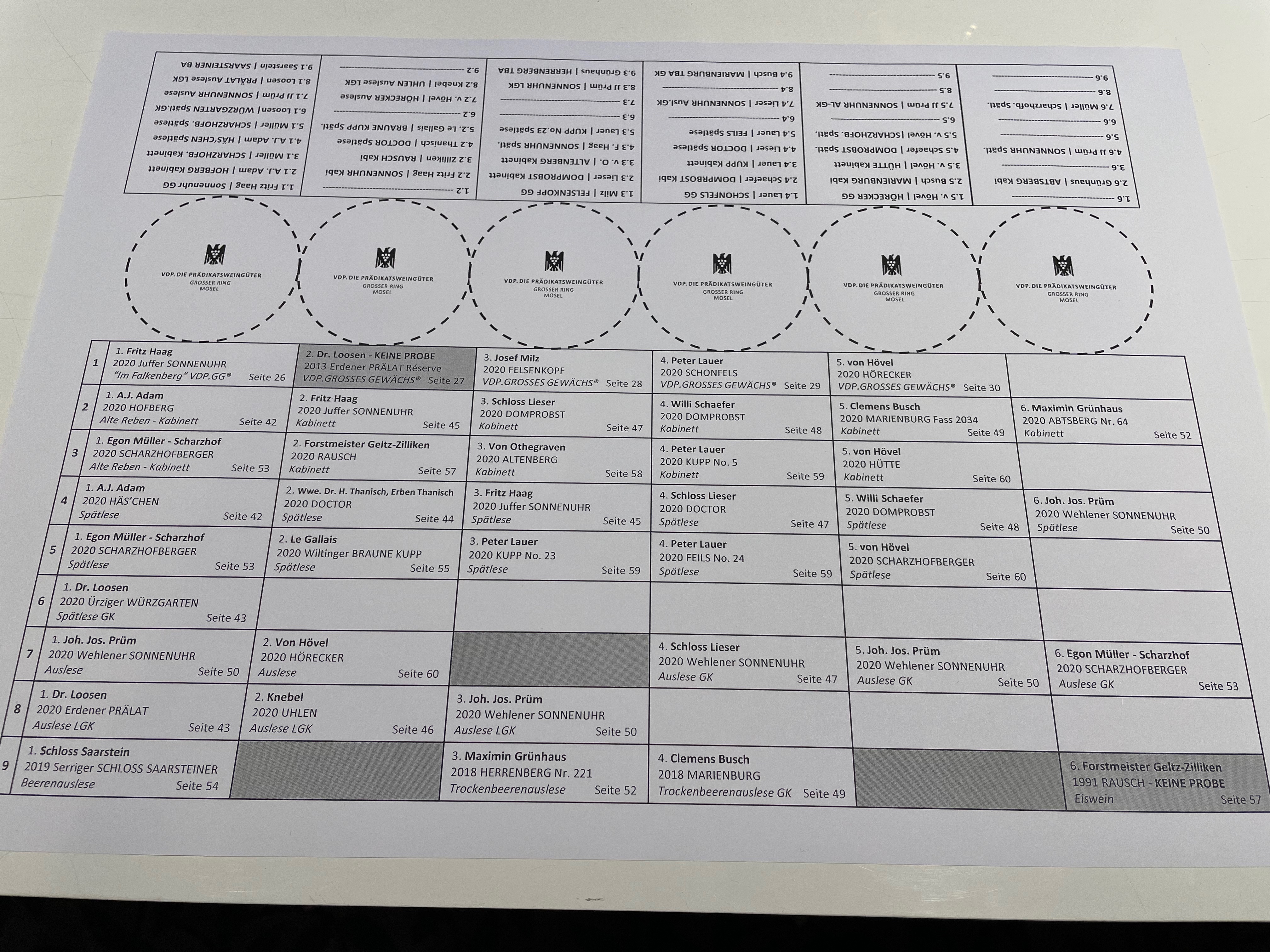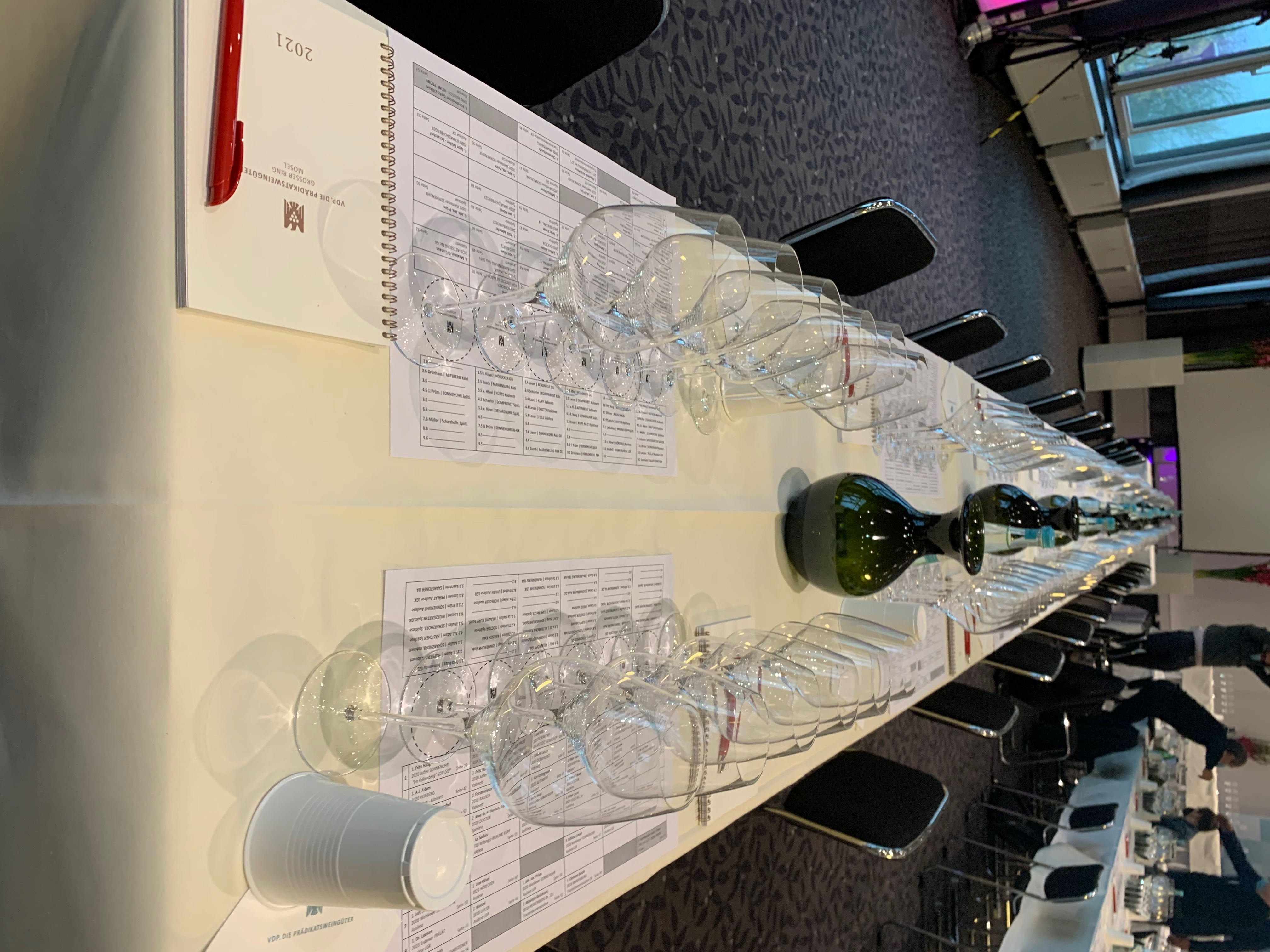
Good afternoon everyone! Starting tomorrow morning at around 7AM EST, this thread is where Brian Stotter and I will bring you real time results from the 2021 VDP Grosser Ring auction as it happens. This thread will serve as a record of sale prices for quick reference so that you do not have to review the entire video- plus of course you get our brilliant commentary and feedback from other Berserkers who may be there in person, and certainly from those of us who placed bids. If you are participating in the auction in any way, or just have questions or thoughts- chime in as we go through the morning. The general format is that Brian will post results along with any commentary, and then I will come in after and on a by-producer basis compare the results to prior year, recent trends or anything else that pops to mind.
The 2021 VDP Grosser Ring auction promises to be an exciting one. It certainly has been very difficult to predict with any feelings of certainty (though in a few hours we will find out how good my predictions were!)
There will be a total of 66 lots offering 40 different wines in various formats from 0.375mL to 6000mL.
It is the year of Kabinett - and just at a time when the wines are extremely popular again. There are more Kabinetts in this auction than any auction I have witnessed.
It is also a year very different in the overall composition of offerings. Each year the list of wines does vary, but 18 of the 40 wines being offered at the 2021 auction were not sold in the 2020 auction.
Finally- there is the reality of ever-increasing access to the auctions by the general public, and coming on the heels of the hottest secondary market period in what has been a near solid bull market run since the mid 1990s. In almost every other aspect of the fine wine market, higher liquidity and greater access have been a key driver of growth. And now the famed annual German wine auctions are joining the bandwagon- changing things forever and with great speed.
From a market standpoint, I think there are two key auctions to watch tomorrow,
- 2020 Egon-Muller Scharzhofberger Riesling Spatlese
The 2019 Spatlese was perhaps the greatest shock in the auction- despite huge ratings and a storied history, the Spatlese- the first Scharzhofberger Spatlese Muller had sent to auction since the 2014 vintage- sold for 221 Euro- or 20 Euro less than the annually released Kabinett Alte Reben. So many of us wish we had bid for more bottles at that price! I personally think it is the annual availability of the Kabinett that had it attracting more interest- from an investor or collector perspective it is a more attractive purchase because it is always there. That said, I expect bidding for the Spatlese to be intense this year on the expectation that it will be a relative bargain. In a world where the Kabinett Auction is going for 220-240 Euro and the Auslese is going for over 1,000 Euro in 750 mL, then it seems logical that Spatlese should fall in the 400-500 Euro range.
I am not sure the 2020 will reach that high, but it could very well smash through the 221 Euro record price it set last year. The one factor that could hinder that a bit is availability. Last year, Muller offered 600 bottles each of the Kabinett and Spatlese (as compared to their usual 1,200 bottles of Kabinett in recent years.) But in 2020 there will be 900 bottles of Kabinett and 600 bottles of Spatlese. At these price points that is a meaningful uptick in supply.
- 2020 Willi Schaefer Graacher Domprobst Riesling Kabinett
I have talked, PMed and emailed with a great many people in the past 3-4 weeks about the upcoming auctions. The one thing we all have in common is that we want at least 4 bottles of this wine and are willing to pay over 100 Euros to get it. While Willi Schaefer’s wines have not hit the price points achieved by Muller and sometimes Prum at the auctions, on a percentage basis it is Willi Schaefer wines that have escalated the most in price in recent years.
Willi Schaefer’s Spatlese Auction has gone up 98% in hammer price over the past 5 years- with a 73% increase just from 2018 to 2019. The strongest 5 year performers among Spatlesen/Kabinetts at auction after Schaefer are Egon Muller’s Kabinett with a 51% increase and Fritz Haag Spatlese with a 50% increase.
And while we who love Willi Schaefer are virtually a cult following, within our merry band is a hard core fan base for the Kabinetts that is about as devoted a group as any you will find in the world of wine.
Here the quantities are going to be very high compared to last year. In last year’s auction there were 360 bottles of Spatlese originally offered with the wine selling at 123 Euro. Schaefer typically ends up adding a lot of bottles during the auction to keep the final price moderate (sometimes up to 150 or so additional bottles), but I do not have any information on how many additional bottles were issued last year. Even so, in 2020 there will be 600 bottles of Kabinett originally offered and 420 bottles of Spatlese - in total nearly triple the number of bottles of Spatlese offered last year.
But even so, with the world’s love for Willi Schaefer and the power of FOMO (fear of missing out), I do think that the Kabinett will sell for over 100 Euro a bottle and will be within 20% of the sale price of the Spatlese.
Time will tell! We will see you here tomorrow, and if you would like to watch the live auction results for yourself- they are available on youtube. Just search for VDP Grosser Ring to find the live feed- the channel has already been set up. The auction is set to begin at 1PM local time in Germany, which is 7AM EST.


